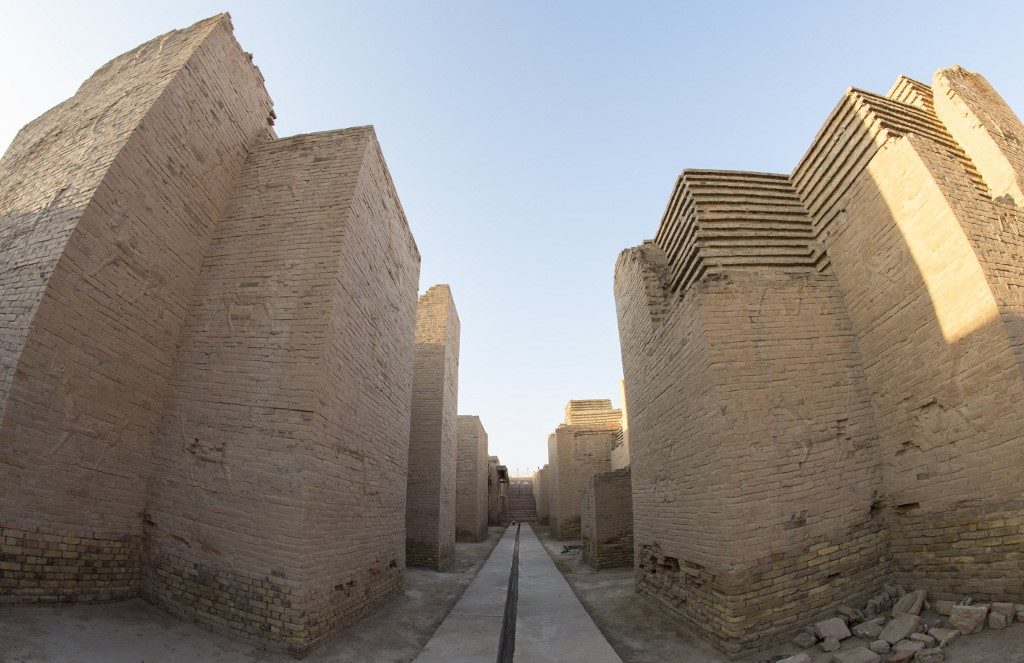SUMMARY
This is AI generated summarization, which may have errors. For context, always refer to the full article.

BAGHDAD, Iraq – UNESCO’s World Heritage Committee voted on Friday, July 5, to list the sprawling Mesopotamian metropolis of Babylon as a World Heritage Site after 3 decades of lobbying efforts by Iraq.
Iraq had been trying since 1983 to have the site – a massive 10-square-kilometer complex of which just 18% has been excavated thus far – recognized by UNESCO.
Straddling Iraq’s Euphrates River about 100 kilometers (60 miles) south of Baghdad, the city was the center of the ancient Babylonian empire more than 4,000 years ago.
“What is the world heritage list without Babylon? How to tell the history of humanity without the earliest of old chapters, Babylon?” said Iraq’s representative to UNESCO’s World Heritage Committee ahead of the vote.
The committee met in Azerbaijan’s capital of Baku to consider Babylon and another 34 sites, including in Brazil and Burkina Faso, for the List.
“It fills a gap that was evident on the list and indeed, this is a type of site that we can say this convention was actually designed to protect,” said Tunisia’s delegate.
After the successful vote, Iraq’s delegation clasped hands and invited all delegates “to visit Babylon, the cradle of civilization.”
Babylon developed as a walled city of mudbrick temples and towers, known internationally for its hanging gardens, the Tower of Babel, and the Ishtar Gate.
Excavation began there in the early 1800s and artifacts were sent abroad, including parts of the Ishtar Gate which remain in museums across Europe.
‘Extremely vulnerable condition’
The site was substantially impacted by new structures built under dictator Saddam Hussein and further damaged by soldiers during the US-led invasion that toppled him in 2003.
UNESCO on Friday said the site’s “extremely vulnerable condition” sparked “serious concerns, with many structures in urgent need of conservation and several on the verge of collapse.”
But it opted not to designate Babylon as a World Heritage Site in Danger after objections from Iraq, and instead said it would work with local authorities to set a plan of action for conservation.
“Babylon is the largest populated city in ancient history,” said Qahtan al-Abeed, who heads the Basra Antiquities Department and led efforts to get the site listed.
“The Babylonians were the civilization of writing, administration and science,” he told Agence France-Presse.
The UNESCO designation “will encourage research and development of the site,” and would “be free publicity for tourists,” he added excitedly.
Babylon is one of 7,000 archeological sites across Iraq, many of which were destroyed by the Islamic State group or ravaged by lucrative artifact smuggling.
Five have been listed by UNESCO, including the Arbil citadel in northern Iraq and the southern Mesopotamian marshes.
The 3 others are also on the agency’s “World Heritage in Danger” list and include Hatra, an ancient city in northern Nineweh province damaged by IS in 2014.
Samarra, along the Tigris River, was added in 2007 and Ashur, the capital of the Assyrian empire, in 2003.
Iraq has another 11 “tentative” sites hoping to be listed by UNESCO.
After decades of back-to-back conflict, the country declared victory against IS in 2017 and is now basking in a period of relative calm.
It has sought to attract both international investors and tourists, and hopes its prominence on UNESCO’s lists can do both. – Rappler.com
Add a comment
How does this make you feel?
There are no comments yet. Add your comment to start the conversation.